Best-Selling Books by Charles Wheelan
Write for Your Life Newly Released!
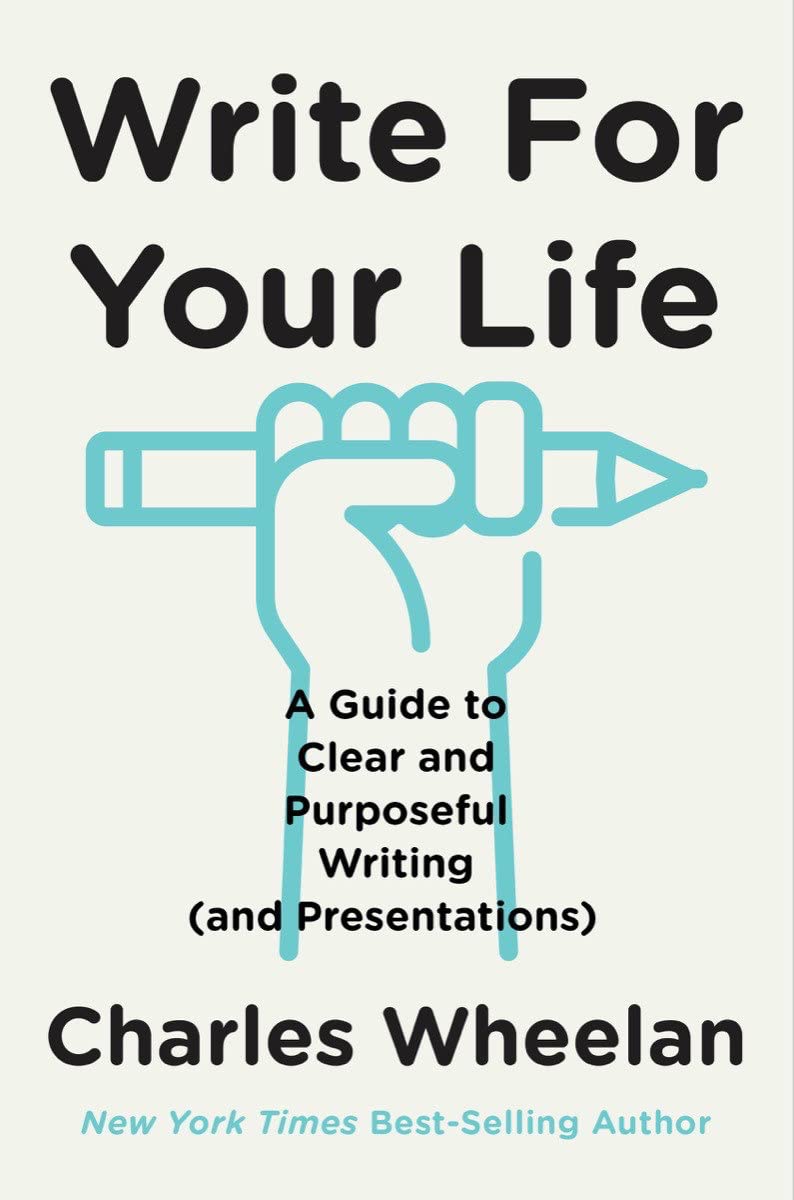
The best-selling author's practical guide to writing clearly and convincingly in every professional setting.
How would you create a winning pitch for your latest investment idea? Or persuasively argue for a major policy change? Or successfully ask your boss for a raise? The answer: clear and effective communication, whether in writing or through a presentation.
Best-selling author Charles Wheelan has spent decades mastering effective communication skills in his work as a writer, college professor, journalist, speechwriter, political candidate, and public speaker. In Write for Your Life, he shares his best tips. Taking readers through all the steps required to arrive at a coherent first draft, he then explains the best ways to improve and fine-tune your writing. He covers how to organize and present information, why it’s necessary to adapt your tone to different audiences, and when to use summaries, sidebars, bullet points, and other tools for making information more digestible. He explores the truth behind popular clichés like "Show, don’t tell" and "Kill your darlings," and discusses the proper use and attribution of quotations from secondary sources. And he goes on to cover how to speak effectively, providing helpful advice for preparing a winning presentation or delivering a speech.
Writing with his signature wit and humor, Wheelan illustrates his points with entertaining examples from his own life, as well as memorable anecdotes from leading magazine and newspaper writers, political figures from Winston Churchill to Barack Obama and Elena Kagan, and a diverse array of the best communicators from the worlds of culture, sports, and politics. Write for Your Life is an essential guide for anyone needing to get their ideas across whether in an email, memo, report, presentation, fund-raising letter, or speech.
We Came, We Saw, We Left Newly Released!
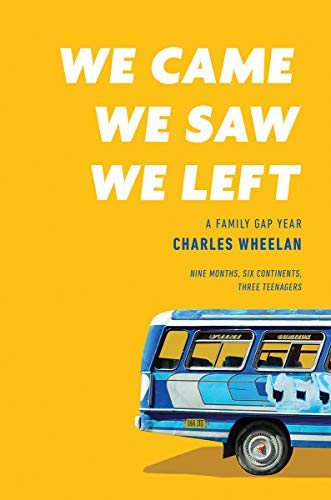
Charlie Wheelan and his family do what others dream of: they take a year off to travel the world. This is their story.
“I loved this family. Wheelan is a lucid and likable storyteller, and his antic family dialogues are spot-on.”
--New York Times
“Their tales of adventure and mishap make a fine antidote to the stay-at-home blues.”
--People
A “dizzying blend of tension, charm, silliness, headlong risk and occasionally transcendent profundity.”
--Los Angeles Times
What would happen if you quit your life for a year? In a pre-COVID-19 world, the Wheelan family decided to find out; leaving behind work, school, and even the family dogs to travel the world on a modest budget. Equal parts “how-to” and “how-not-to”—and with an eye toward a world emerging from a pandemic—We Came, We Saw, We Left is the insightful and often hilarious account of one family’s gap-year experiment.
Wheelan paints a picture of adventure and connectivity, juggling themes of local politics, global economics, and family dynamics while exploring answers to questions like: How do you sneak out of a Peruvian town that has been barricaded by the local army? And where can you get treatment for a flesh-eating bacteria your daughter picked up two continents ago? From Colombia to Cambodia, We Came, We Saw, We Left chronicles nine months across six continents with three teenagers. What could go wrong?
Naked Statistics: Stripping the Dread from the Data

Can statistics be interesting and intuitive? (I certainly suffered through some bad stats classes in college and graduate school.) The idea behind Naked Statistics was to update a W.W. Norton classic, How to Lie with Statistics, which has sold over a million copies.
We are surrounded by data; statistics is the tool for making sense of that data, in fields ranging from retailing to law enforcement. Naked Statistics is packed with loads of examples (some of them quite funny). In a first for me as a writer, the book hit the New York Times nonfiction hardback bestseller list just a few weeks after publication in January of 2013.
Naked Economics: Undressing the Dismal Science

I pretty much wrote this book by accident, if that’s possible for a book. I was teaching a course on economics at the Medill School of Journalism and I was not able to find a book that would be appropriate for the course. I called a friend in the publishing industry and asked her for a recommendation. I explained that I wanted a book that would convey the big ideas in economics without getting bogged down in the math.
After a long pause, she said, “I don’t think there is one. But you’re going to write it. It’s going to be called Economics for Poets. And I’m going to read it.”
We changed the title, but the rest is now history.
Naked Money: A Revealing Look at Our Financial System
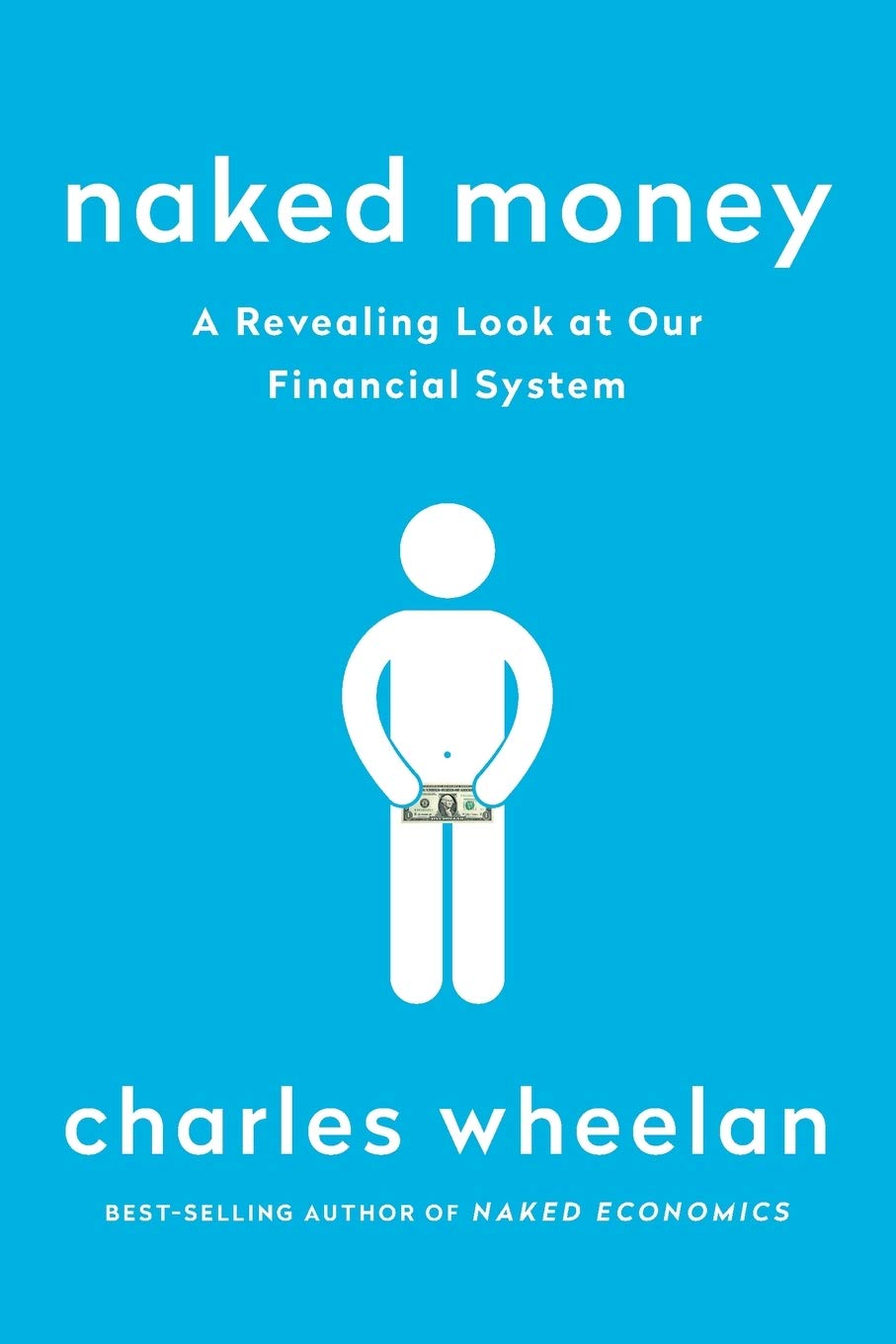
Consider the $20 bill.
It has no more value, as a simple slip of paper, than Monopoly money. Yet even children recognize that tearing one into small pieces is an act of inconceivable stupidity. What makes a $20 bill actually worth twenty dollars? In the third volume of his best-selling Naked series, Charles Wheelan uses this seemingly simple question to open the door to the surprisingly colorful world of money and banking.
The search for an answer triggers countless other questions along the way: Why does paper money (“fiat currency” if you want to be fancy) even exist? And why do some nations, like Zimbabwe in the 1990s, print so much of it that it becomes more valuable as toilet paper than as currency? How do central banks use the power of money creation to stop financial crises? Why does most of Europe share a common currency, and why has that arrangement caused so much trouble? And will payment apps, bitcoin, or other new technologies render all of this moot?
In Naked Money, Wheelan tackles all of the above and more, showing us how our banking and monetary systems should work in ideal situations and revealing the havoc and suffering caused in real situations by inflation, deflation, illiquidity, and other monetary effects. Throughout, Wheelan’s uniquely bright-eyed, whimsical style brings levity and clarity to a subject often devoid of both. With illuminating stories from Argentina, Zimbabwe, North Korea, America, China, and elsewhere around the globe, Wheelan demystifies the curious world behind the paper in our wallets and the digits in our bank accounts.
The Rationing (a novel)
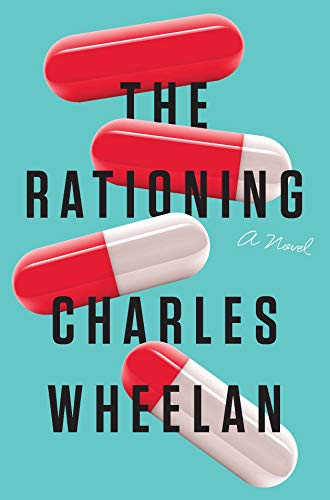
America is in trouble—at the mercy of a puzzling pathogen. That ordinarily wouldn’t lead to catastrophe, thanks to modern medicine, but there’s just one problem: the government supply of Dormigen, the silver bullet of pharmaceuticals, has been depleted just as demand begins to spike.
Set in the near future, The Rationing centers around a White House struggling to quell the crisis—and control the narrative. Working together, just barely, are a savvy but preoccupied president; a Speaker more interested in jockeying for position—and a potential presidential bid—than attending to the minutiae of disease control; a patriotic majority leader unable to differentiate a virus from a bacterium; a strategist with brilliant analytical abilities but abominable people skills; and, improbably, our narrator, a low-level scientist with the National Institutes of Health who happens to be the world’s leading expert in lurking viruses.
Little goes according to plan during the three weeks necessary to replenish the stocks of Dormigen. Some Americans will get the life-saving drug and others will not, and nations with their own supply soon offer aid—but for a price. China senses blood and a geopolitical victory, presenting a laundry list of demands that ranges from complete domination of the South China Sea to additional parking spaces at the UN, while India claims it can save the day for the U.S.
10 1/2 Things No Commencement Speaker Has Ever Said
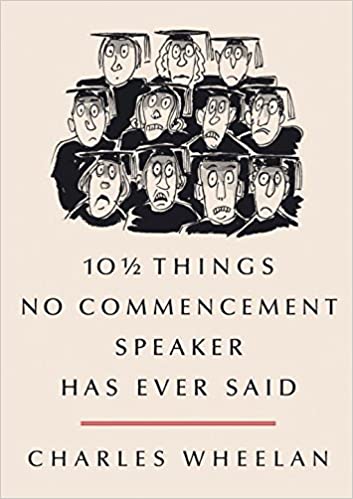
In 2011, the Dartmouth class of 2011 invited me to be their faculty speaker for Class Day, which is a special Dartmouth ritual on the day before Commencement. (Conan O’Brien was the commencement speaker.) I’m a Dartmouth alum, so I had literally been sitting in the same place as those students, only 23 years earlier.
I could not give a conventional speech. Instead, I gave a talk called “Five Things No Commencement Speaker Has Ever Said” (such as #1, Your Time in Fraternity Basements Was Not Wasted). There were actually six points in the speech; I had two number fours. The speech hit a nerve and began bouncing around the web. At that point, I worked with W.W. Norton to turn the speech into a book. I had the joy of working with the former New Yorker cartoonist Peter Steiner, whose great illustrations (including the cover at left) are a perfect complement to the text.
The Centrist Manifesto
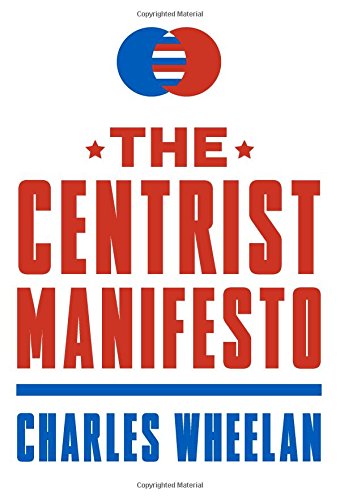
From debt ceiling standoffs to single-digit Congress approval ratings, America’s political system has never been more polarized―or paralyzed―than it is today. As best-selling author and public policy expert Charles Wheelan writes, now is the time for a pragmatic Centrist party that will identify and embrace the best Democratic and Republican ideals, moving us forward on the most urgent issues for our nation.
Wheelan―who not only lectures on public policy but practices it as well (he ran unsuccessfully for Congress in 2009)―brings even more than his usual wit and clarity of vision to The Centrist Manifesto. He outlines a realistic ground game that could net at least five Centrist senators from New England, the Midwest, and elsewhere. With the power to deny a red or blue Senate majority, committed Centrists could take the first step toward giving voice and power to America’s largest, and most rational, voting bloc: the center.
Revealing Chicago: An Aerial Portrait
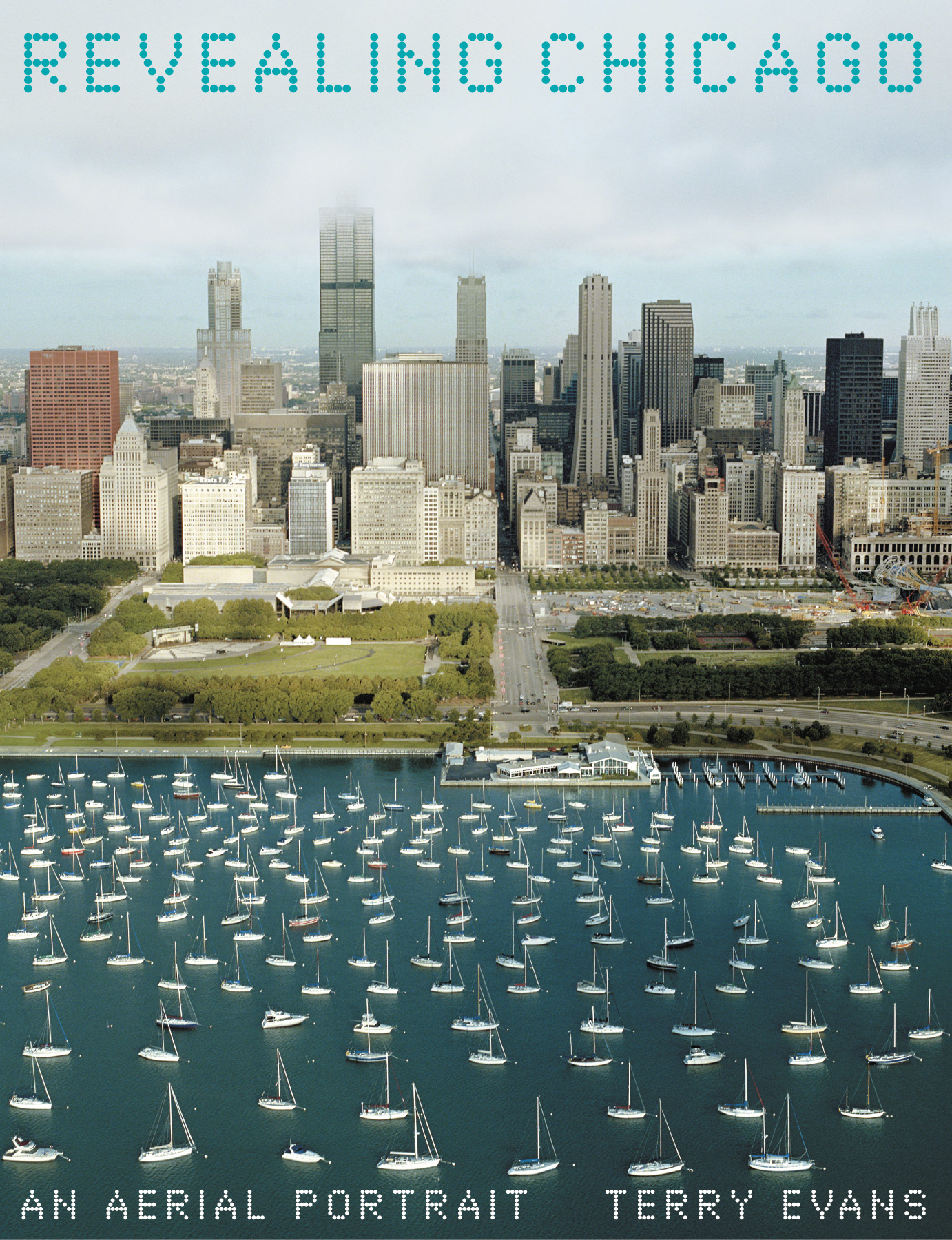
This project was a complete blast. Terry Evans, an award-winning photographer was commissioned to take aerial photos of the Chicago region for an outdoor exhibit in Millennium Park. Terry asked me to write the captions and essays to accompany the photos.
As Terry compiled photos, I went to work researching the shots and adding text. On one occasion, I had the chance to go up in a helicopter with her as she shot the Chicago skyline just after dawn. It was beautiful–but I will also admit that a tightly-circling helicopter giving off diesel exhaust can make one “helicopter sick”. (I just barely made it back to our base at Gary Airport.) Terry’s photos for the exhibit were compiled into this beautiful book.

